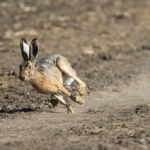Understanding the Cutest Animals in the Animal Kingdom
Exploring the Cutest Animals in the Animal Kingdom
Animals come in many forms, each possessing unique traits. Some animals, however, capture human affection through their undeniable cuteness. This exploration delves into what makes certain animals appear cute and examines a few standout examples from the animal kingdom.

Why Do We Find Animals Cute?
The perception of cuteness often stems from traits reminiscent of human babies. Big eyes, round faces, and small noses trigger protective instincts. This response is not just a societal quirk but rooted in evolutionary biology. The term baby schema or Kindchenschema describes how features common in young animals stimulate caregiving responses.
Studies suggest animals with these features evoke feelings of affection and a desire to nurture. While not all animals possess these traits, those that do often become beloved by people worldwide. This psychological phenomenon crosses cultural lines, showcasing universal human connections with animals.
Fennec Fox
The fennec fox, native to the Sahara Desert, is a notable example. Its oversized ears are not just adorable; they serve a purpose. They help dissipate heat and locate prey underground. This fox’s petite stature and round eyes enhance its appeal. Despite being a wild animal, its playful demeanor wins hearts.
Quokka
Known as the world’s happiest animal, the quokka hails from Australia. It often smiles due to its mouth shape. This marsupial is generally friendly and approachable, sometimes known to pose for selfies with tourists. While they seem cuddly, it’s essential to remember they are wild creatures deserving respect.
Red Panda
Red pandas sport rust-colored fur and bushy tails. They reside in the Himalayan forests and use their tails for warmth during chilly nights. These animals might resemble raccoons more than pandas, yet their unique appearance and solitary, bamboo-munching lifestyle endear them to many.
Axolotl
Axolotls stand out due to their perpetual smiling faces and juvenile appearance. Native to certain lakes in Mexico, they display neoteny, retaining juvenile traits into adulthood. They can regenerate limbs, serving as research subjects in regenerative medicine. Amphibian enthusiasts favor them for their distinct and charming visage.
Koala
Koalas, native to Australia, spend most of their time in eucalyptus trees. Their round, fluffy ears and button noses contribute to their cuteness. Though often called koala bears, they are marsupials, not bears. Koalas have a peculiar diet, primarily feeding on eucalyptus leaves.
Sloth
Sloths, known for their slow movements and tranquil demeanor, reside in Central and South American rainforests. They spend much of their lives hanging upside down. Their leisurely behavior connotes a relaxed approach to life. Large, round faces and languid motions contribute to their charm.
Sea Otter
Sea otters are marine mammals known for their playful activities and tool use. They float on their backs and crack open shellfish using rocks. Thick fur protects them from cold waters, while their expressive eyes and sociable nature captivate observers. Conservation efforts focus on maintaining healthy populations due to past endangerment.
Hedgehog
These small mammals, with their spiky exteriors, are surprisingly gentle. Hedgehogs roll into balls as a defensive mechanism when threatened. They have become popular as pets but require specific care to thrive. Their inquisitive faces and tiny snouts make them adorable companions.
Penguin
Penguins, with their waddling gait and sleek black-and-white feathers, are a hit worldwide. They mostly inhabit the Southern Hemisphere, including Antarctica. Emperor penguins, in particular, are social creatures known for collective parenting during harsh winters. Observing their community-centric behavior and playful attitudes brings joy to many.
Pika
Related to rabbits, pikas are small mammals residing in cold mountainous regions. Given their sensitivity to climate change, conservationists watch them closely. Due to their petite frames and high-pitched calls, pikas win hearts even under challenging conditions. Their daintiness and energetic movements make them captivating to observe.




Subscribe for Updates
Get the latest articles delivered to your inbox.
We respect your privacy. Unsubscribe anytime.